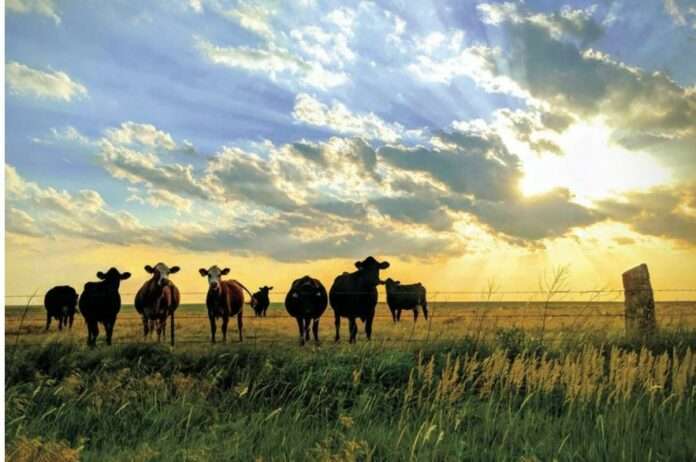K-State beef cattle experts offer tips on biosecurity to keep the herd healthy
By Lisa Moser, K-State Research and Extension news service
MANHATTAN, Kan. — Just as sickness can spread among humans in a close-contact environment, it can as well with beef cattle that are co-mingled for the first time. However, the experts at the Kansas State University Beef Cattle Institute said there are steps producers can take to lessen the disease risk before bringing a new animal onto the property.
This was the topic of discussion on a recent Cattle Chat podcast, featuring the perspectives of K-State veterinarians Brad White, Bob Larson and Brian Lubbers, and Julia Herman, beef cattle specialist veterinarian for the National Cattlemen’s Beef Association.
“When we talk about biosecurity, we are really talking about ways to keep diseases out of our operations,” White said.
The experts agree that the level of disease risk varies across different herds because of the differences in management practices.
“Many commercial cow-calf operations are considered fairly closed herds because they bring few new animals into the herd,” Larson said, referring to a herd that adds a new bull on occasion but raises all its replacement females.
“The more cattle you bring into the herd, the greater the disease risk becomes, leading to an increased emphasis on biosecurity,” Lubbers said.
Making a biosecurity plan
To lessen the risk for disease, Herman advised producers to purchase their cattle from a reputable seedstock operator.
“Reputable seedstock operators test their cattle for diseases before selling them, keep complete records and their cattle are in good condition,” Herman said.
Lubbers stressed the importance of whole herd testing to catch chronic diseases.
“Some diseases may not appear right away, so testing the herd over multiple years is the best practice to ensure that the herd is free of disease,” Lubbers said.
Even when purchasing cattle from a reputable seller, Herman recommends all new cattle go into a 21-30 day quarantine in their new location to be sure they are not carrying unexpected sickness to the rest of the herd.
White added that isolating new cattle from the rest of the herd can reduce sickness that is transmitted through the air.
“We need to make sure the new cattle don’t have nose-to-nose contact with the rest of the herd for that isolation period,” White said.
Larson suggested that new cattle be placed in a pasture separated by a gravel road or other barrier that gives the animals a distance greater than a fence line.
The experts also suggest working with a local veterinarian to discuss a biosecurity plan before a disease outbreak.
White said: “Disease plans that happen after there is a problem are not nearly as effective as pre-emptive plans. A little planning goes a long way toward total herd health.”
To hear the full discussion, listen to the Cattle Chat podcast online. For health guidance tips on building a biosecurity plan, go to the NCBA Beef Quality Assurance or Secure Beef Supply website.
-30-
FOR PRINT PUBLICATIONS: Links used in this story
BCI Cattle Chat podcast, https://ksubci.org/2022/03/04/beef-quality-assurance-biosecurity-secure-beef-supply-with-julia-herman/
Beef Quality Assurance, www.bqa.org.
Secure Beef Supply, www.securebeef.org
K State Research and Extension is a short name for the Kansas State University Agricultural Experiment Station and Cooperative Extension Service, a program designed to generate and distribute useful knowledge for the well being of Kansans. Supported by county, state, federal and private funds, the program has county extension offices, experiment fields, area extension offices and regional research centers statewide. Its headquarters is on the K State campus in Manhattan. For more information, visit www.ksre.ksu.edu. K-State Research and Extension is an equal opportunity provider and employer.
Story by:
Lisa Moser
785-532-2010
lmoser@ksu.edu
More information:
Bob Larson
785-532-4257
rlarson@vet.k-state.edu
Brian Lubbers
785-532-4012
blubbers@ksu.edu
Brad White
785-532-4243
bwhite@vet.k-state.edu



